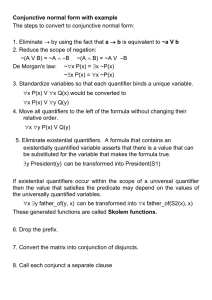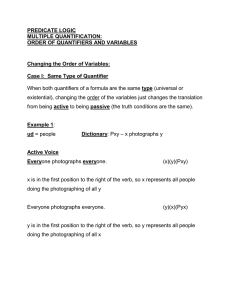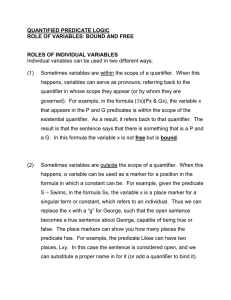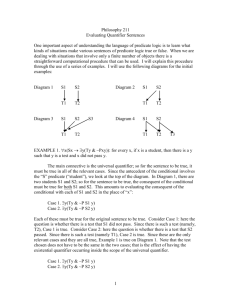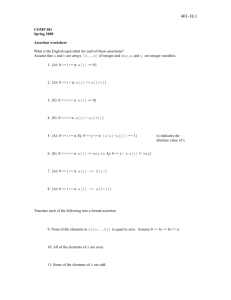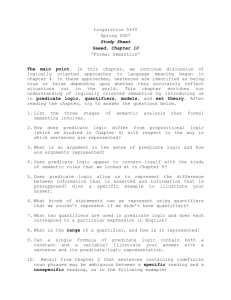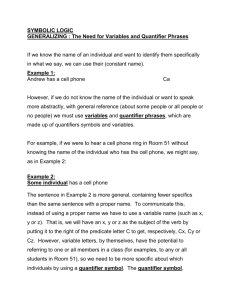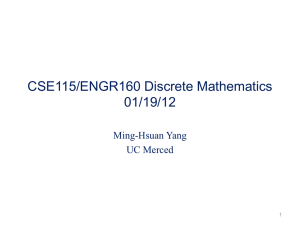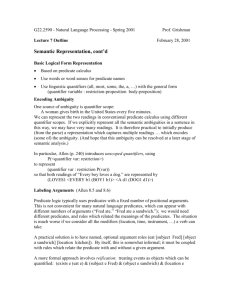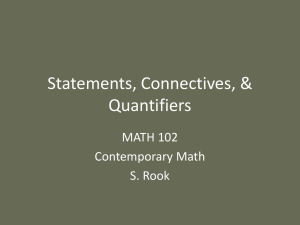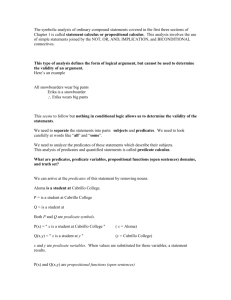STATEMENTS WITH TRANSITIVE VERBS ABOUT GROUPS OF
advertisement
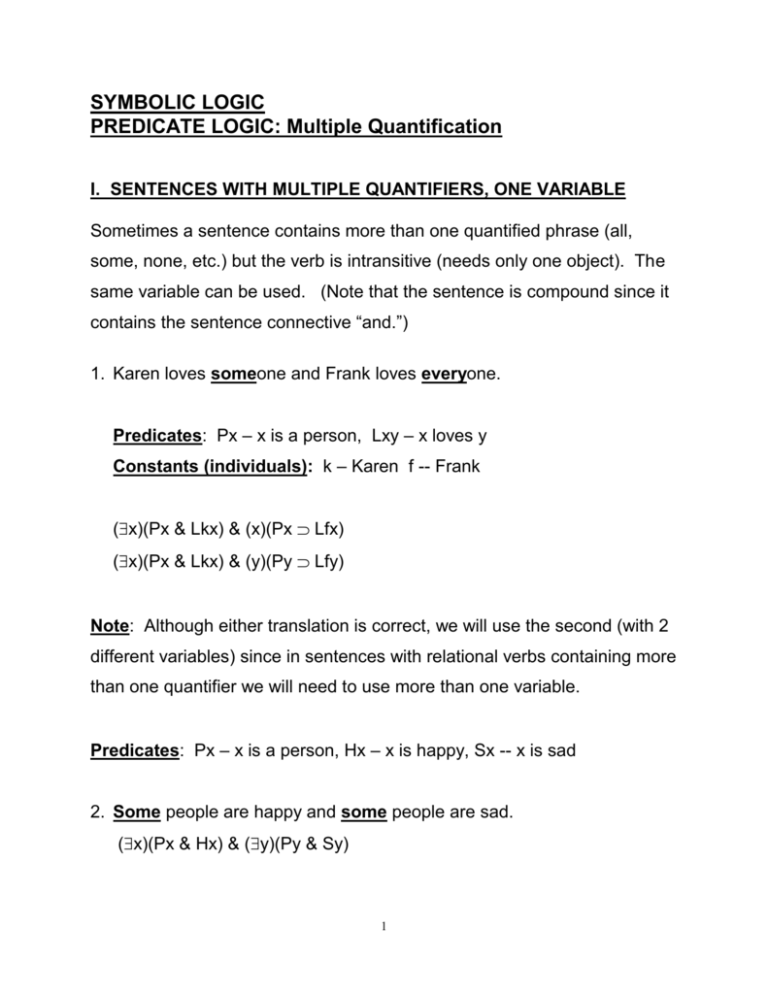
SYMBOLIC LOGIC PREDICATE LOGIC: Multiple Quantification I. SENTENCES WITH MULTIPLE QUANTIFIERS, ONE VARIABLE Sometimes a sentence contains more than one quantified phrase (all, some, none, etc.) but the verb is intransitive (needs only one object). The same variable can be used. (Note that the sentence is compound since it contains the sentence connective “and.”) 1. Karen loves someone and Frank loves everyone. Predicates: Px – x is a person, Lxy – x loves y Constants (individuals): k – Karen f -- Frank (x)(Px & Lkx) & (x)(Px Lfx) (x)(Px & Lkx) & (y)(Py Lfy) Note: Although either translation is correct, we will use the second (with 2 different variables) since in sentences with relational verbs containing more than one quantifier we will need to use more than one variable. Predicates: Px – x is a person, Hx – x is happy, Sx -- x is sad 2. Some people are happy and some people are sad. (x)(Px & Hx) & (y)(Py & Sy) 1 II. RELATIONAL SENTENCES WITH MULTIPLE QUANTIFIERS (2 variables) Sometimes a sentence with a relational verb (at least binary -- requiring two objects) contains more than one quantifier within the same atomic sentence. For example, 3. Everyone photographs everyone. (x)(y)(Pxy) 4. Someone photographs his/herself. (x)( Pxx) These sentences contain only one subject and one predicate, so they are not compound, but they contain more than one quantifier, each attached to the same verb. If, as in 4, we are referring to only one individual, then only one variable is needed. But in 3, two variables are needed to show that the relation holds not just between one individual and his/herself. As in cases of all sentences with relational verbs, the order in which smaller case letters appear to the right of the predicate letter determines what role the named object plays with respect to the verb. That is, the object in the first position to the right of the predicate letter is the subject of the verb; the one in the second is the object. For example, in everyone photographs everyone: (x)(y)(Pxy) the entity referred to by x is the one photographing the entity referred to by y. Note: In all cases we need to use parentheses with quantifiers to make sure that all predicates are bound. 2 5. Someone loves someone (else). (x)(y)[(Px & Py) & Lxy)] Case 1: Same type of quantifier (universal or existential) ud = people Predicates: Hxy – x hits y 6. Someone hit someone. (x)(y)(Hxy) 7. Everyone hits everyone. (x)(y)(Hxy) Changing the Order of Variables (Active/Passive Voice) When both quantifiers of a formula are the same type (universal or existential), changing the order of the variables just changes the translation from being active to being passive (the truth conditions are the same). ud = people Predicates: Pxy – x photographs y 8. Everyone photographs everyone. (x)(y)(Pxy) or (y)(x)(Pyx) 9. Everyone is photographed by everyone. (x)(y)(Pyx) Case 2: Different types of quantifier (universal and existential) However, when one formula has a universal and an existential quantifier in front, you cannot change the order of the quantifiers (thus changing the main connective) without profoundly changing what is said. ud = people Predicates: Cx – x is a child, Mxy – x mothers y 10. Every child is mothered by someone. 3 (x)(y)(Cx Myx) 11. There is a person who mothers every child. (y)(x)(Cx & Myx) From Predicate Logic to English When there are two quantifiers in front of a formula, the formula most on the outside is the main quantifier, determining the kind of sentence. Universals (x)(y) When a formula begins with a universal quantifier and then has an existential quantifier to its right, the sentence is saying that for every person (cat, thing, whatever) there is at least one object that stands in a certain relationship with it. Predicates: Px – x is a person, Nxy – x needs y 12. (x)(y) [(Px (Py & Nxy)] For every person, there is someone they need. 13. (x)[Px (y)(Py & Nxy)] Everyone needs someone. Existentials (x)(y) When a formula begins with an existential quantifier and then has a universal quantifier to its right, it is saying that there is a certain person (cat, thing, whatever) towards which every other thing has a certain relation. 14. (x)[Px & (y)(Py Nxy)] There is someone who needs everyone. 4
